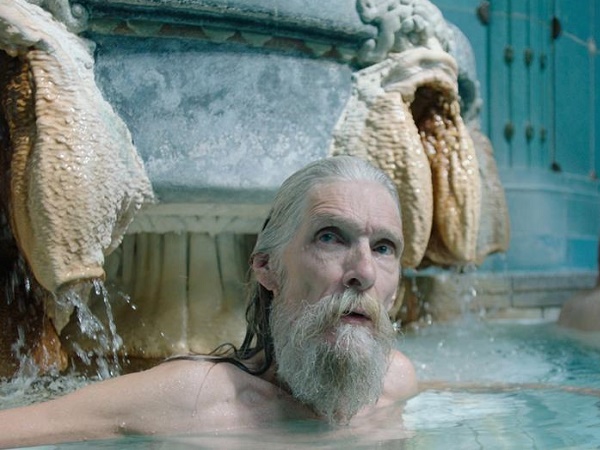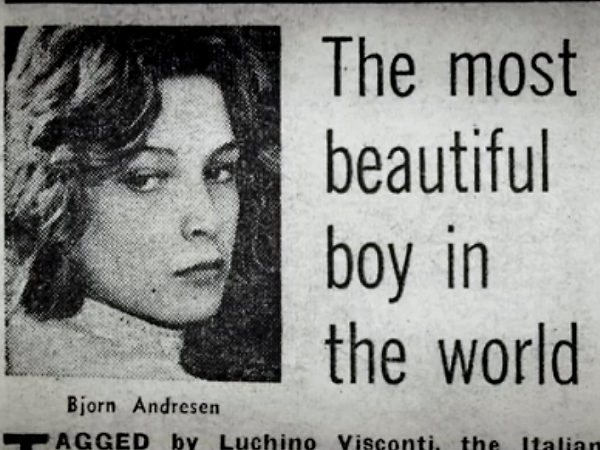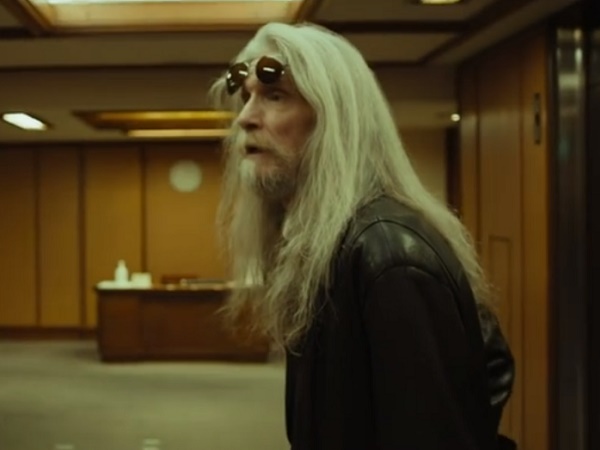This weekend sees the release of The Most Beautiful Boy in the World – a documentary film from writers/directors Kristina Lindrstöm and Kristian Petri. The film follows the story of Swedish actor Bjön Andrésen, who in his youth was once dubbed ‘the most beautiful boy in the world’.
Andrésen is now in his mid-‘60s, but back when he was 15-years-old he appeared in director Luchino Visconti’s Italian-French drama, Death in Venice (1971). In the movie, the actor took on the role of Tadzio – a picture-perfect boy who becomes the central obsession for a much older man.
Playing Tadzio brought Andrésen instant international fame, but being thrust into the spotlight at such a young age, and with no real protection, proved to be life-changing. His physical appearance turned him into a commodity, while his youth and inexperience meant he quickly found himself out of his depth and in a world he was unable to fully understand.
The Most Beautiful Boy in the World takes a look at Andrésen’s story from where he is at present, to where he came from. The documentary highlights key points that shaped his journey, including the moment he was cast in Death in Venice.

The Most Beautiful Boy in the World is an interesting movie to watch, but at times a very difficult one to view. The film essentially follows the story of someone who is clearly very troubled, who has battled demons throughout his life, and even after all these years is still finding his way.
There is a sense of sadness throughout the picture and one which is conveyed through small conversations, an exploration of the Andrésen’s childhood, and also through some archival footage which is very revealing. One piece of material in particular, which opens the movie, is incredibly uncomfortable to watch, but is very important for telling the story that unfolds.
The footage was shot during the casting call for Death in Venice. In the piece, Andrésen is being considered for the role of Tadzio and this means checking out whether he could be appealing to an old man with an obsession.
As director Luchino Visconti mulls over the merits of the boy in front of him, Andrésen is treated like an object, rather than a person. He is asked to remove his top, to help the director in his decision and it all feels very sleazy.
It is clear the young actor feels uneasy about the situation. Watching the scene unfold is also an uneasy experience for the audience, and it becomes quite apparent that if this is how Andrésen was treated before he was given the part, then everything that followed must have been worse.
This scene feels very much like Andrésen’s ‘Sliding Doors’ moment, and we are seeing the point in time when the wrong path was taken. Although it would appear he had little choice over the paths he was given, so unlike the film, Sliding Doors (1998) there may not have been a better outcome.

As the story progresses, the film discusses how Andrésen was caught up in a whirlwind of intense media attention and fan adulation. And throughout it all, it was his face and boyish aesthetic that became the driving force behind his ‘stardom’, with few people considering the intense mental toll this was taking on him – even those who should have been looking out for his welfare.
There are discussions about places Andrésen found himself in, and suggestions of dark times during his post-Death in Venice years. The documentary doesn’t go into specific details, but it is clear he had to contend with some male attention he didn’t want.

As the narrative opens up, the film explores Andrésen’s childhood, the circumstances surrounding the death of his mother, and the sense that he grew up in a world where communication was non-existent. The issues he faced surrounding Death in Venice were significant, and shaped his life, but they are part of a much larger problem that stemmed back to before he took the job.
The film also takes a look at his role as a father, including his relationship with his daughter, as well as the guilt and despair he feels over the death of his son. The boy passed away as an infant, under tragic circumstances, and this is something which still haunts Andrésen to this day.

The Most Beautiful Boy in the World is a personal story about someone who has become broken, bruised and abused by life. It offers a window into the soul of a man who at times has become a spectator, rather than a player, and who may never get back in the game.
The film is powerful and moving, and I found it compelling. However, it should be noted that it only scratches the surface of Andrésen’s story, and I do feel there is a lot more to be told here, so perhaps the film could have benefited from more time?
But then maybe what is presented is all that Andrésen feels comfortable with. And ultimately, the key to this story is a greater understanding of what happens to those who are objectified when they really should be protected.
If you wish to check out The Most Beautiful Boy in the World, the docu-film is available in select UK cinemas from today. Alternatively, it can be purchased through all major digital platforms, including iTunes and Amazon.

Leave a comment